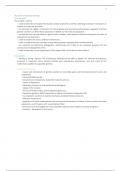Samenvatting
Complete summary and notes of Evolutionary Genetics course
- Instelling
- Vrije Universiteit Amsterdam (VU)
Complete notes and summary of the course content, including examples and images. Very detailed with everything you need to know for the exam, including a recap of the basic genetics as a course introduction.
[Meer zien]




